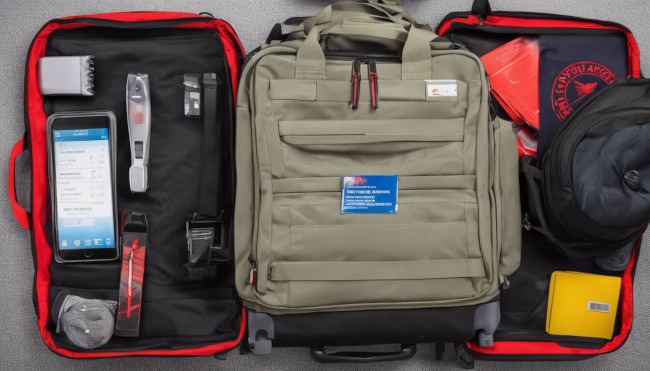Can You Bring a Stun Gun on a Plane?

Are Stun Guns Allowed on Planes?
No, stun guns are not allowed in carry-on luggage under TSA regulations. However, you can bring a stun gun in checked luggage if it’s properly packed. That means:
- Batteries must be removed (if possible).
- The stun gun should be transported in a manner that renders the device inoperable from accidental discharge.
- You must comply with state and airline regulations at your departure and arrival locations.
Always check with your airline before traveling, as policies may vary.
TSA Regulations on Stun Guns & TASERs
| Item | Carry-On | Checked Bag |
|---|---|---|
| Stun Gun | ❌ Not Allowed | ✅ Allowed (Properly Packed) |
| TASER | ❌ Not Allowed | ✅ Allowed (Properly Packed) |
| Pepper Spray | ❌ Not Allowed | ✅ Allowed (Max 4 oz, Must Have Safety Mechanism) |
| Personal Alarms | ✅ Allowed | ✅ Allowed |

What Happens if You Try to Bring a Stun Gun in Carry-On?
- TSA will confiscate it during screening.
- You may face fines or legal issues, especially if traveling internationally.
- It will not be returned, and you might be subject to further questioning.
TSA-Approved Self-Defense Alternatives for Travelers
Since stun guns aren’t allowed in carry-ons, consider these TSA-approved self-defense options:
✅ Personal Alarms – Loud sirens that attract attention in emergencies.
✅ Tactical Flashlights – Bright, high-lumen lights that temporarily blind an attacker.
✅ TSA-Approved Pepper Spray – Allowed in checked bags (4 oz max with safety cap).
✅ Self-Defense Keychains – Discreet tools that provide protection while traveling.
◇ Shop Travel-Friendly Self-Defense Gear Now →
Final Tips for Safe & Legal Travel
- Check local stun gun laws at your destination—some states and countries ban stun guns entirely.
- Review your airline's policies before packing.
- Never try to sneak a stun gun into your carry-on—it’s not worth the risk.
By planning ahead, you can stay safe while avoiding airport hassles. Looking for legal, TSA-approved self-defense options? Check out TBOTECH’s travel-friendly protection tools.
Add your comment now!
Post CommentRecent posts
-
03/12/2025Best Stun Guns for Self-Defense in 2025
-
03/11/2025How to Prevent Kidnapping – Top Safety Tips
-
03/11/2025What Do Rapists Look For? 10 Red Flags to Avoid
